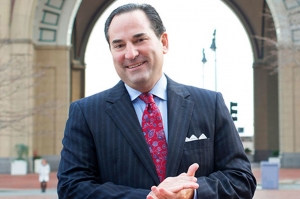Lenders Can Find Additional Capacity by Tapping The Collateral Value of Brands and IP, Tiger Group Exec Tells CFA
WASHINGTON, Nov. 5, 2018 /PRNewswire/ — Tapping new sources of collateral is the key to gaining an edge in today’s hypercompetitive asset-based lending sector, noted Bradley W. Snyder, Executive Managing Director of Tiger Group, during a panel sponsored by the new Washington chapter of the Commercial Finance Association (CFA).
[imageframe lightbox=”no” style_type=”none” bordercolor=”” bordersize=”0px” borderradius=”0″ stylecolor=”” align=”right” link=”” linktarget=”_self” animation_type=”0″ animation_direction=”down” animation_speed=”0.1″ class=”” id=””] [/imageframe]”With so much cash out there, lenders are intent on uncovering additional capacity as a way to gain a much-needed advantage,” Snyder said. “Increasingly, that means leveraging the value of nontraditional assets such as retail brands and intellectual property. However, it is important for the appraisal to carefully consider how Internet channels and other factors can affect collateral values.”
[/imageframe]”With so much cash out there, lenders are intent on uncovering additional capacity as a way to gain a much-needed advantage,” Snyder said. “Increasingly, that means leveraging the value of nontraditional assets such as retail brands and intellectual property. However, it is important for the appraisal to carefully consider how Internet channels and other factors can affect collateral values.”
Held on Oct. 15 at the Capital One Building in McLean, Va., the discussion on origination, underwriting and valuation was part of the kickoff celebration for CFA’s Washington chapter. The audience included about 75 lenders and service providers from HSBC, Wells Fargo, PNC, Capital One, M&T Bank, MidCap Financial and World Bank Group, among many others.
Snyder’s comments focused on ways in which asset-based lenders can dig deep to uncover additional collateral value. His fellow panelists included Tim Tobin, Group Head, ABL, at Capital One, N.A.; Jason M. Dufour, Managing Director at White Oak Healthcare Finance; Jacob C. Streit, Team Lead, Mid-Atlantic Region, HSBC, and Heather Sonnenberg, Finance Partner, Blank Rome.
Historically, Snyder noted, lenders have been reluctant to loan against seemingly intangible assets such as retail brands and intellectual property. The Internet, though, has created new routes to value. “Let’s say a retailer shutters its brick-and-mortar operations,” Snyder said. “I’ve been part of deals where we continued to sell online, kept the customer list warm and ended up selling the list and IP for a multiple of what we paid.”
Understanding the true value of a brand, however, is a multifactorial equation hinging on considerations related to channels, categories, target markets, ownership and more, Snyder explained. “At Tiger, when we appraise brands, we carefully investigate each of those areas,” he said. “Was the company leveraged to the hilt by a private equity firm, with no investment in running a competitive ecommerce operation? Is the customer list valuable and easily transferable? Are there ample opportunities to sell ancillary merchandise under the IP in question? For lenders, knowing the answers to such questions makes a huge difference.”
For lenders, added Snyder, disruptions in the marketplace mean that blanket statements about particular categories–such as the notion that retail is headed for an “apocalypse”–should be replaced with individualized analyses. “Valuations have always been situation-specific,” he said. “But more than ever, you’ve got to look carefully at a raft of issues–who the core customers are, the commitment on the part of ownership, the balance sheet, the investment in analytics and more. The best appraisal firms are relentless about such factors and how they affect the whole.”




